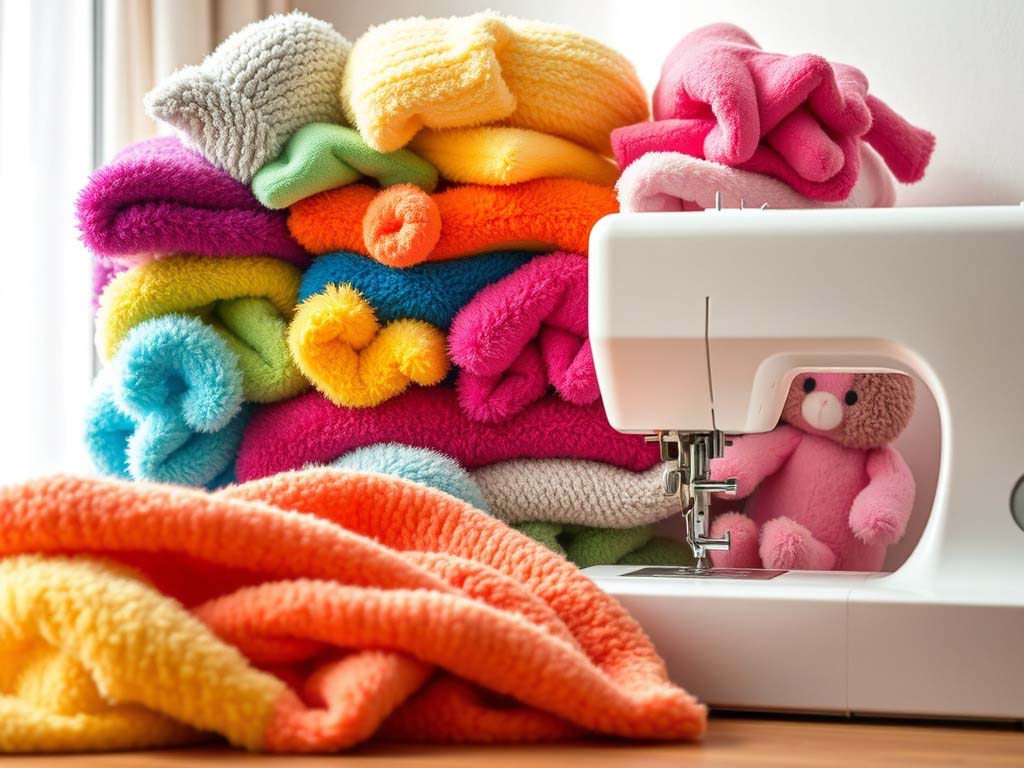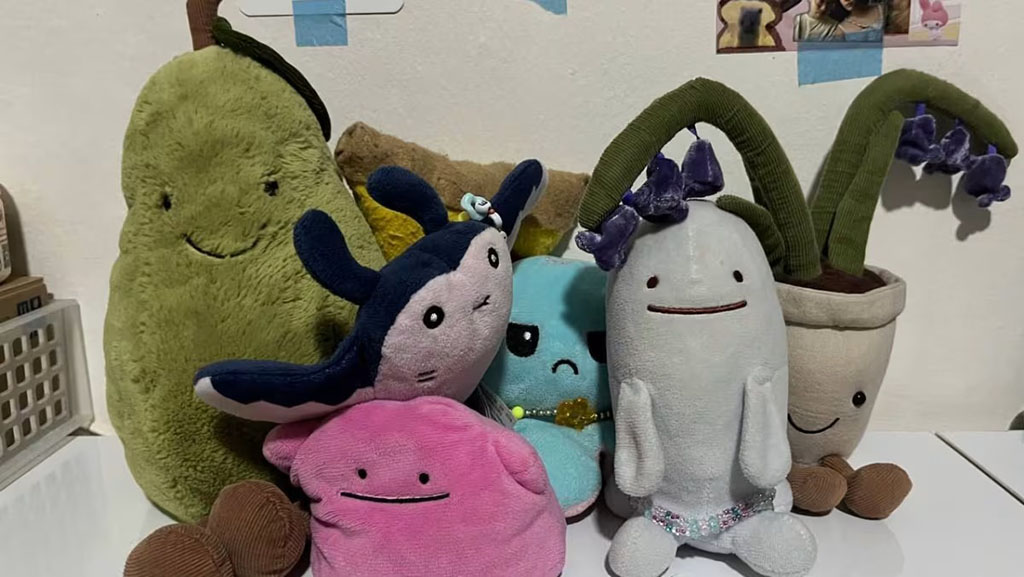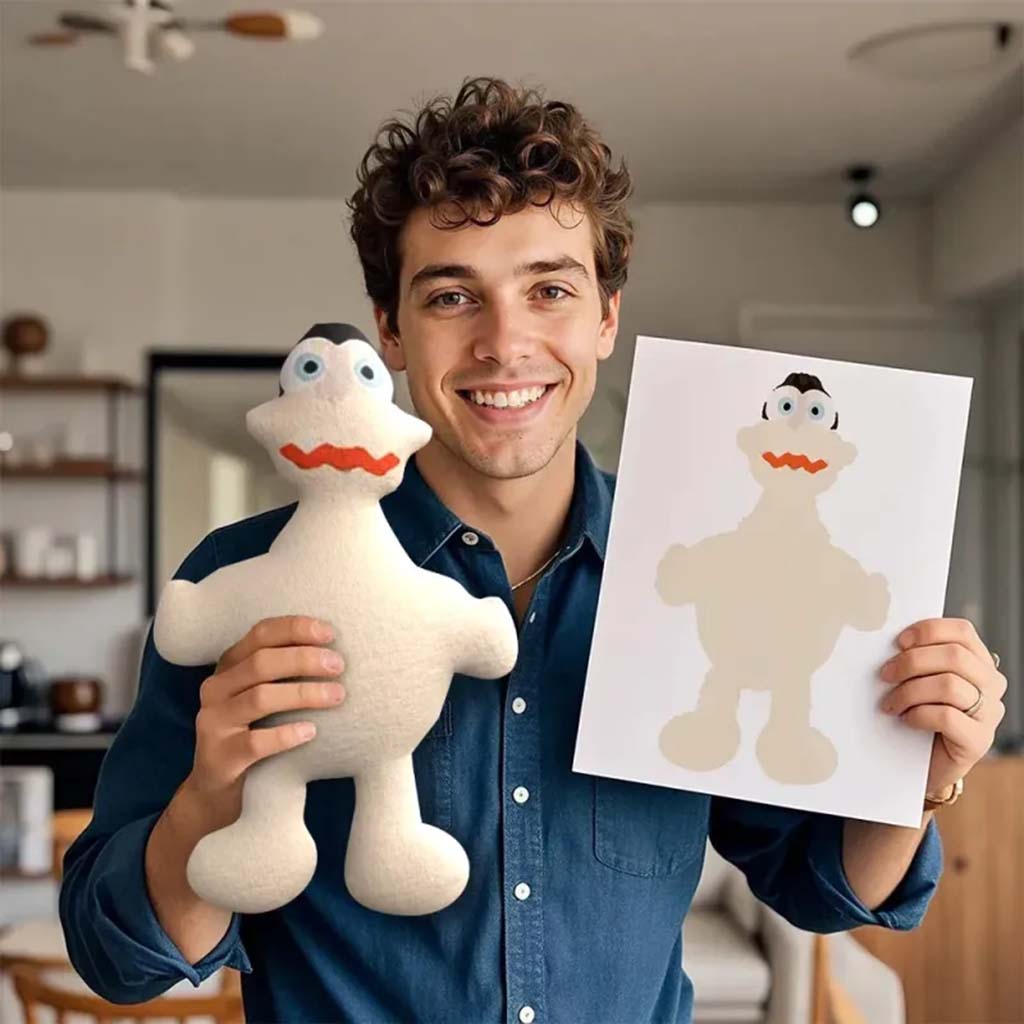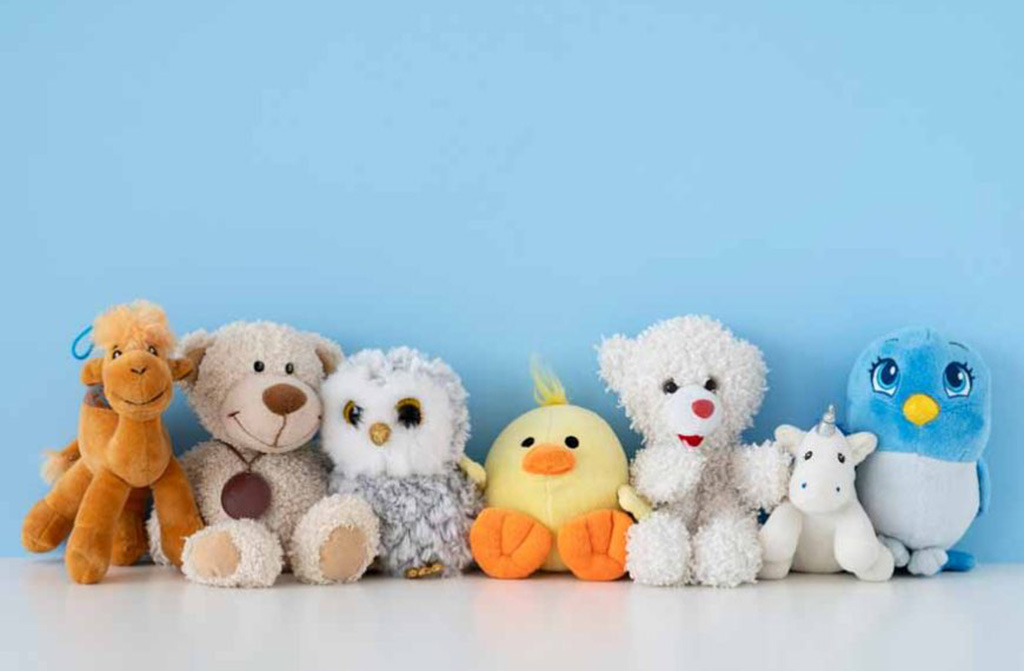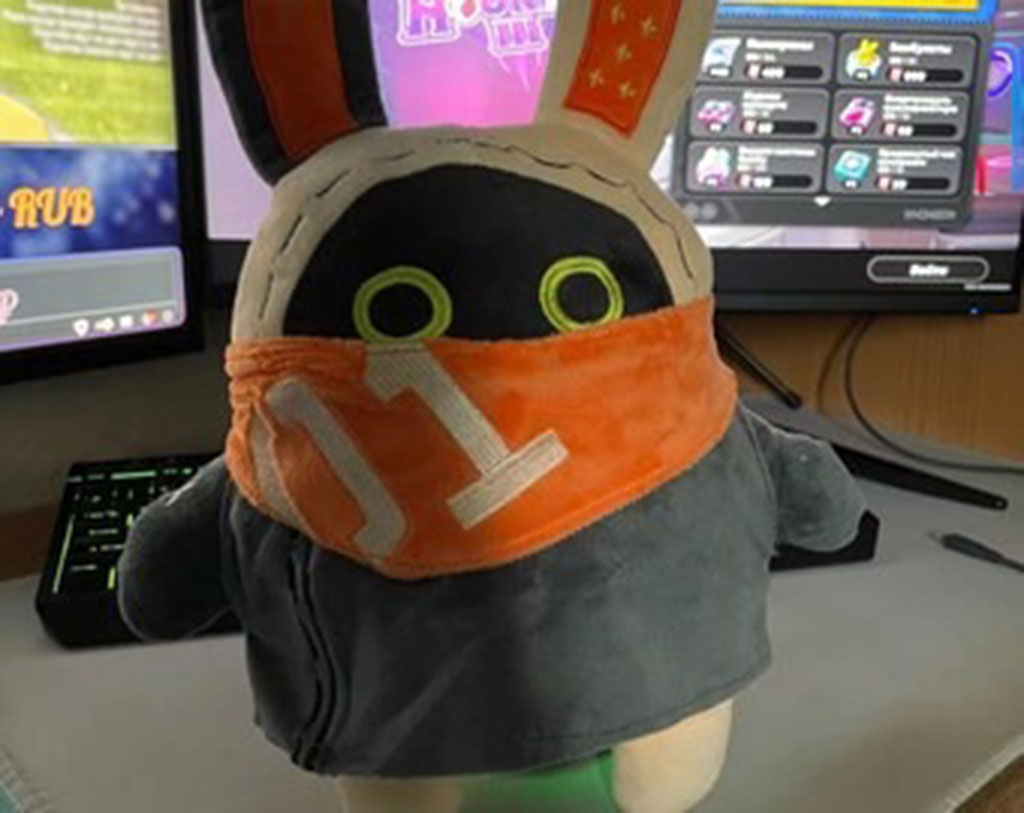By Amanda — Kinwin (OEM/ODM plush manufacturer, CE & ASTM ready)
When buyers ask “Which cloth should we use for stuffed toys?”, they’re really asking how to balance softness, durability, compliance, and cost. In production, that answer lives in fabric families (minky, velboa, faux fur, fleece), fiber specs (denier, pile length, density, GSM), backing construction, finishing/dyeing, and verified safety. Below is a practical guide you can use as a technical brief for sourcing and development.
Which fabric families are most commonly used for stuffed toys (minky, velboa, faux fur, fleece)?

Across infant, gift, collectible, and décor lines, four families dominate. We also deploy sherpa/teddy and velour for specific looks or baby zones.
- Minky (microplush/microfleece): Ultra-fine polyester pile (≈1–3 mm). Silky hand, slight sheen, ideal for infant-safe faces and precise embroidery.
- Velboa: Dense, very short pile (≈1–2 mm) with crisp surface—excellent for sharp prints and clean silhouettes at a competitive cost.
- Faux fur: Medium to very long pile (5–70 mm+); directional nap for realistic animals and premium textures.
- Fleece (polar/double-sided): Brushed knit without distinct pile; matte, cozy, forgiving, great for bodies and accessories.
- Sherpa/Teddy: Loop or curly pile; “wooly” look for lamb textures and winter bears.
- Velour/Tricot (poly or cotton): Smooth low pile; soft against skin, embroidery-friendly.
Table 1 — Core Plush Fabrics at a Glance
| Fabric | Typical Pile | Fiber | Look/Handfeel | Best Uses | Cost Tier |
|---|---|---|---|---|---|
| Minky | 1–3 mm | 100% PET microfibers | Silky, slight sheen | Baby plush, faces | $2.2–4.0 |
| Velboa | 1–2 mm | 100% PET | Smooth, crisp print | Bodies, markings | $1.8–3.2 |
| Faux Fur | 5–70 mm | PET / modacrylic blends | Fluffy, realistic | Animals, premium lines | $6–18+ |
| Fleece | N/A (brushed) | PET or blends | Matte, warm | Bodies, scarves | $1.6–3.0 |
| Sherpa/Teddy | 3–10 mm loops | PET/cotton blends | Wooly, cozy | Lamb trims, winter | $2.4–5.0 |
| Velour/Tricot | <1 mm | PET or cotton | Soft, uniform | Infant zones, faces | $2.8–4.8 |
How do fiber types and pile specifications (denier, length, density, GSM) affect handfeel and durability?

Softness you feel is largely fiber-driven; durability is structure-driven.
- Denier: Lower denier (≈0.9–1.5d) = finer filaments and silkier touch, common in minky. Higher denier feels sturdier but less “buttery.”
- Pile length: Short (1–3 mm) = sleek and easy to embroider; medium (3–10 mm) = plush body; long (10–70 mm) = luxury/realism but needs grooming.
- Pile density & GSM: Higher density and 250–350 gsm yield richer cover and less “grin-through”; heavier fabrics sew slower and cost more.
- Polymer & cross-section: High-grade PET with trilobal/hollow cross-sections can lower friction and add loft.
Table 2 — Fiber & Pile Spec Effects
| Parameter | Softer Range | Durability Note | Sourcing Tip |
|---|---|---|---|
| Denier | 0.9–1.5d | Finer fibers may pill if backing is weak | Pair with stable warp-knit |
| Pile Length | 2–6 mm for cuddle | Longer piles snag easier | Plan nap alignment |
| Density | Higher stitch/pile density | Better cover, less balding | Validate with seam slippage test |
| GSM | 230–320 gsm (core) | Heavier sews slower | Balance feel vs. throughput |
Which backing constructions and stretch characteristics optimize pattern yield and seam strength?

The unseen knit backing dictates cutting yield, stability, and how well seams hold.
- Warp-knit (tricot): Low vertical stretch; ideal for faces and panels needing precise embroidery and symmetry.
- Weft-knit: More stretch and drape; forgiving for round bodies but can distort fine details.
- Spandex blends: High recovery; great for apparel-like trims, but manage embroidery skew.
- Nonwoven/laminated print base: Stable for digital prints and sharp markings.
Table 3 — Backing & Stretch Guide
| Backing | Stretch | Best For | Patterning Note | Seam Strength Tips |
|---|---|---|---|---|
| Warp-knit (tricot) | Low–moderate | Faces, precision panels | Minimal distortion | Lockstitch + bar-tack at stress points |
| Weft-knit | Moderate–high | Round bodies | Add easing on curves | Overlock + topstitch to stabilize |
| Spandex blend | High recovery | Trims, apparel details | Use embroidery stabilizer | Reduce stitch density to avoid tunneling |
| Nonwoven/laminate | Minimal | Print panels | Superb registration | Shorter stitches to avoid perforation |
How do finishing and dyeing processes (raising, shearing, heat-setting, softeners) impact softness, colorfastness, and shedding?

Finishing turns a good knit into a great plush—or ruins it if overdone.
- Raising/Napping: Lifts fibers to create pile and initial softness.
- Shearing: Levels tips for uniform height; necessary for clean faces and consistent color read.
- Brushing/Polishing: Aligns pile direction; improves glide and sheen.
- Heat-setting: Locks pile lay and dimensional stability; reduces crush marks.
- Softeners (silicone micro-emulsions): Lower surface friction; choose wash-durable grades to avoid oily hand.
- Dyeing: Proper disperse dyeing and reduction clearing improve colorfastness (wash/rub/saliva-sweat). Poor clearing = bleed and lab failures.
Table 4 — Finish & Dye Impact Map
| Process | Softness | Colorfastness | Shedding | Notes |
|---|---|---|---|---|
| Raising + Shearing | High | Neutral | Low–Med | Over-shearing thins cover |
| Brushing/Polishing | High | Neutral | Low | Match assembly nap direction |
| Heat-setting | Medium | Neutral | Low | Control temp/time to avoid gloss |
| Silicone Softeners | High | Neutral– | Low | Specify wash-durable grade |
| Proper Reduction Clearing | — | High | — | Critical for dark/bright shades |
What safety and chemical compliance standards (EN71-3, CPSIA, REACH) govern plush fabric selection?

Plush fabrics for toys must meet mechanical, flammability, and chemical rules. Lock fabrics before sampling to save time and avoid retests.
- EU: EN 71-1/2/3 (mechanical, flammability, migration of certain elements) + REACH SVHC oversight; azo dyes restricted.
- US: ASTM F963 (mechanical/physical) + CPSIA (lead, phthalates; tracking labels).
- UK: UKCA mirrors EU requirements.
- Brand RSLs / OEKO-TEX®: Additional voluntary or retailer-mandated limits.
Key practice: keep a qualified fabric library (approved shades/finishes) and reuse across SKUs where allowed; every “new” finish or dye lot may trigger re-validation.
Table 5 — Compliance Snapshot for Fabrics
| Region/Standard | Fabric-Relevant Focus | Typical Evidence |
|---|---|---|
| EN 71-3 (EU) | Element migration | Third-party lab report per lot/color |
| EN 71-2 (EU) | Flammability | Pass for toy fabrics (no rapid surface flash) |
| ASTM F963 (US) | Mechanical, small parts (indirect for fabric) | Seam strength tests in product stage |
| CPSIA (US) | Lead & phthalates limits | Certificates + lab results |
| REACH (EU) | SVHC monitoring, azo dyes | Supplier declarations + spot testing |
| Retailer RSL / OEKO-TEX® | Expanded chemical screens | Certificates + ongoing audits |
How should OEM/ODM buyers evaluate fabrics using lab tests (Martindale, pilling, seam slippage), MOQs, lead times, and sustainability claims (rPET, Oeko-Tex, GRS)?

Evaluation blends performance data, commercial terms, and traceability.
Lab tests (typical buyer targets):
- Martindale abrasion: meet brand-cycle target without tip break (define zones: nose/paws).
- Pilling (Random Tumble/ICI): ≥ Grade 4 after specified cycles.
- Colorfastness to washing/rubbing: ≥ 4–5.
- Seam slippage: within limit under load; critical for long/loose pile.
- Saliva/sweat fastness (for baby): ≥ 4.
Commercials:
- MOQs: stock minky/velboa colors often small; custom dye or faux fur needs higher MOQs (and longer lead).
- Lead time: stock colors 2–3 weeks; custom dye 4–6 weeks; complex faux fur 6–8 weeks+.
- Sustainability: verify rPET claims with GRS (chain of custody) and request Oeko-Tex where relevant; keep batch-level docs.
Table 6 — Fabric Sourcing & Validation Checklist
| Item | Target/Expectation | Why It Matters |
|---|---|---|
| Abrasion (Martindale) | Meet brand spec by zone | Resist tip wear on high-contact areas |
| Pilling Grade | ≥ 4 after cycles | Maintain clean surface over time |
| CF to Wash/Rub | ≥ 4–5 | Avoid bleed/staining |
| Seam Slippage | Within limit (ISO 13936) | Prevent seam grin & fiber pull-out |
| MOQ | Stock: low; Custom dye: higher | Impacts cash and flexibility |
| Lead Time | Stock 2–3 w; Custom 4–6 w | Plan sampling and PP windows |
| rPET/GRS | Valid chain-of-custody docs | Support eco claims in marketing |
| OEKO-TEX® / RSL | Current certificates | Retail acceptance, brand trust |
Practical fabric stacks we recommend (ready-to-brief)

- Infant-safe cuddle bear
Minky 2.5–3 mm, 280–320 gsm, warp-knit backing; raising + shearing + light silicone; EN 71/CPSIA passed shades; embroidered face only. - Realistic animal line
Faux fur (10–25 mm) with directional nap; coordinated short-pile velboa for muzzle/paws; heat-set; brushing; high CF dark shades; reinforced seam plan. - Eco-forward collection
rPET minky/velboa (GRS), matching rPET fiberfill; kraft mono-material packaging; color palette selected from pre-qualified eco shades to minimize retest.
Conclusion
For stuffed toys, “which cloth” is really which specification: fabric family, fiber fineness, pile & GSM, backing stability, finishing, and verified compliance. Minky and velboa deliver clean softness and precision; faux fur delivers realism; fleece and sherpa add warmth and texture. Pair the right fabric with solid lab data, realistic MOQs/lead times, and verified eco documents, and you’ll have plush that is soft, durable, safe, and scalable.
At Kinwin, I help buyers turn mood boards into tested fabric specs that pass CE/ASTM/CPSIA and look great on shelf. Need swatch curation, RSL planning, or an eco-verified fabric library? I’m ready to support your next range.
Contact me at [email protected] or visit kinwintoys.com.


